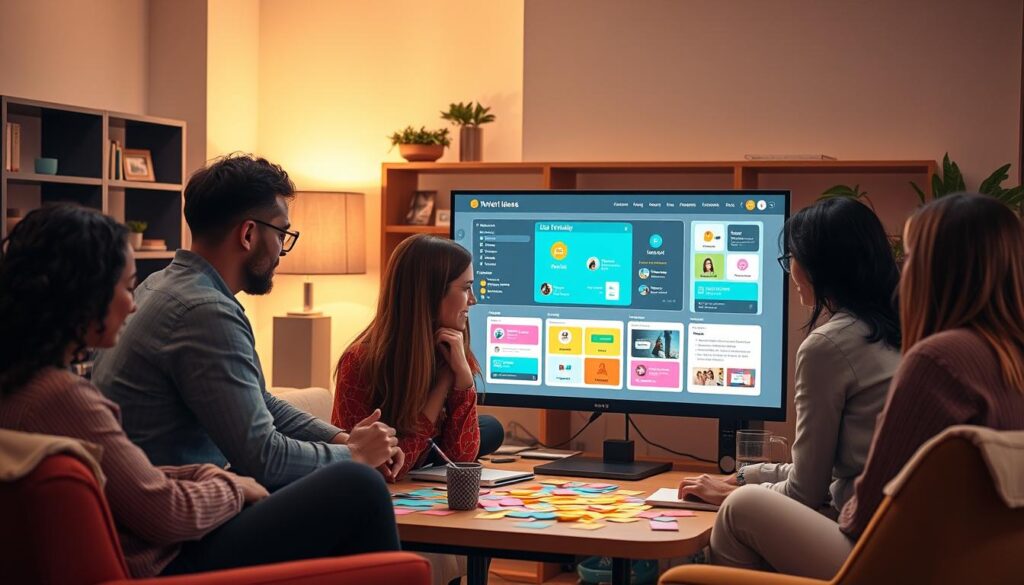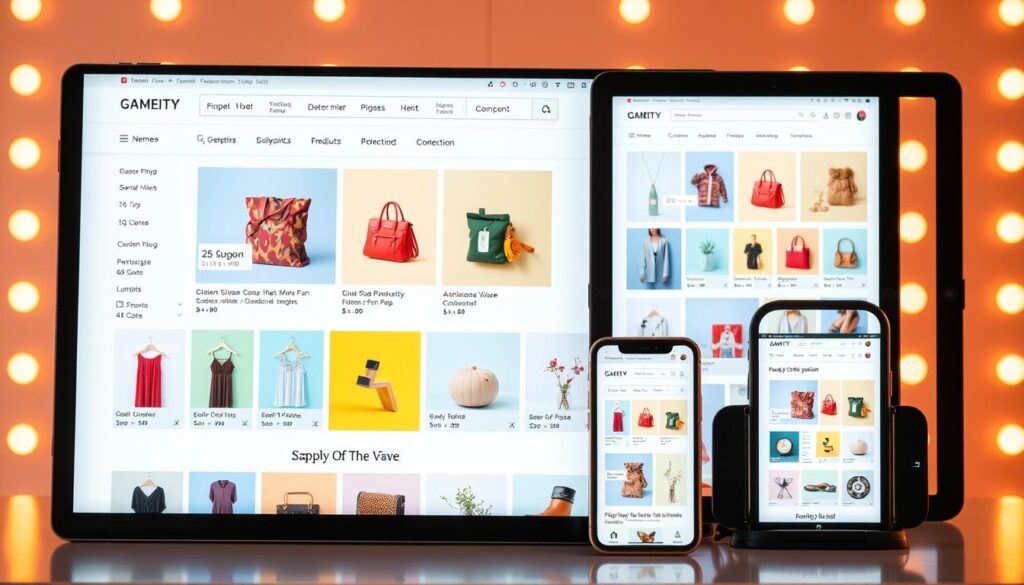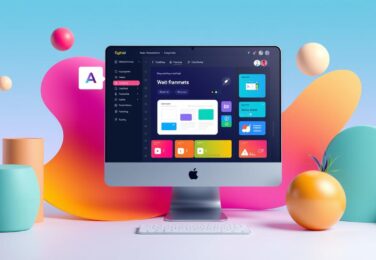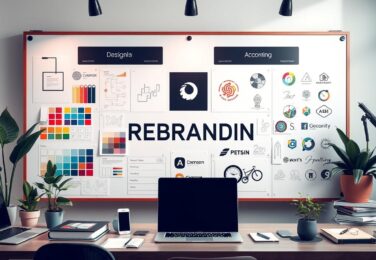Understanding UX and UI Component

Table of Content
Websites can change the digital world and make experiences that amaze people. But how do we start? It’s all about understanding the mix of user experience (UX) and user interface (UI) design.
I remember the first website that really caught my eye. It was easy to use, had a great layout, and looked amazing. It felt like the digital world was talking to me. This experience made me want to learn more about great web design.
In this article, we’ll explore what UX and UI are all about. We’ll see how they work together to make websites that grab people’s attention. We’ll talk about design rules, responsive web design, and how to make websites better for users and search engines.
If you design websites, develop them, or just love learning about them, this article is for you. We’ll share tips and strategies to make your digital projects stand out. So, let’s start and learn how to create amazing user experiences for Australians.
Key Takeaways
- Understand the pivotal role of UX and UI in website design and development
- Discover how to align design principles for optimal user satisfaction
- Explore the strategies for creating responsive web designs that adapt to any screen
- Learn how to leverage content management systems (CMS) to streamline your workflows
- Discover the importance of e-commerce website optimization for boosting conversion rates
- Uncover the best practices for integrating SEO into your design and development process
- Gain insights into ensuring web accessibility for an inclusive digital experience
Unveiling the Intersection of User Experience and Interface Design
In website development, UX and UI are key. UX deals with the overall user journey, including how easy it is to use. UI focuses on what users see and interact with, like layout and colours.
Decoding the Essence of UX and UI
Good UX design puts the user first, making sure the site is easy to use. UI design, on the other hand, shapes how the site looks and feels to the user.
Aligning Design Principles for Optimal User Satisfaction
When UX and UI work together, websites become both beautiful and user-friendly. We design with the user in mind, making sure the site is easy to use and fun to interact with. This way, our digital products meet and exceed user expectations.
“The intersection of user experience and interface design is where the magic happens, where we can create digital experiences that captivate, empower, and delight our audience.”
Web design is always changing, and UX and UI must stay aligned. By understanding and blending these two, we can make our digital products truly special. This way, we build strong connections with our users.
website design and developers: Crafting Intuitive Interfaces
We are key in making websites easy to use. We get to know what our users want. This helps us make sites that are fun to use and easy to find your way around.
We focus on user interface (UI) design and user experience (UX). This means making sites that look good and work well. We make sure everything is easy to use and meets the user’s needs.
Our skills in website design and development turn complex things into simple digital experiences. We use the latest trends to make sites that look great and work well. This makes users happy and keeps them coming back.
“Successful website design is not about imposing our vision on users, but about understanding their needs and crafting experiences that delight them.”
We always put the user first in our design. We keep testing and improving our designs to meet our users’ changing needs. This way, we make sure our sites are always the best they can be.
With website design and developers, we make digital experiences that grab users’ attention and help businesses grow. Our focus on UI and UX is changing the web, one great site at a time.
Responsive Web Design: Adapting to Every Screen
In today’s world, people use websites on many different devices. Responsive web design is key to making sure our sites work well on all screens. We design our websites to change and fit the user’s device, making browsing easy and fun.
Ensuring Seamless User Experiences Across Devices
Responsive web design focuses on mobile users. We make our sites easy to use on phones and tablets. This means our layouts change, text and images stay clear, and menus and forms are simple to use.
Our sites should work well on all devices, from phones to laptops. By starting with a mobile-first design, we ensure a smooth experience on any device. This way, users get a consistent and enjoyable visit, no matter how they access our site.
| Device Type | Responsive Design Considerations |
|---|---|
| Smartphones | Optimized layout, touch-friendly interactions, streamlined content |
| Tablets | Flexible grid systems, responsive typography, adaptable multimedia |
| Desktops | Expansive layouts, high-resolution imagery, enhanced interactivity |
Responsive web design makes our sites great on any device. This leads to happy customers and better search engine rankings. It’s a key part of our digital success.
Empowering User-Centric Experiences
At the core of great website design is a user-centric approach. We dive deep into understanding our audience’s needs and wants. This lets us build websites that empower users and encourage meaningful interactions. We do this by doing thorough user research, making navigation easy, and always listening to feedback to make the user experience (UX) better over time.
Creating a customer-focused design means putting the user first. We aim to make websites that look good and are easy to use. This means making website usability a top priority, so users can easily do what they need to on our sites.
“The best way to predict the future is to create it.” – Peter Drucker
By focusing on user-centric design, we unlock our websites’ full potential. We can meet user needs, solve problems, and keep improving our sites to match what users want.

As we aim to make websites that grab and hold users’ attention, we must remember the user is central to our work. By following a user-centric design philosophy, we can build sites that are not just visually appealing but also offer an outstanding user experience. This keeps our audience coming back for more.
The Art of Content Management Systems
In the fast-paced world of web development, content management systems (CMS) are key. They change how we make, manage, and keep our online sites up-to-date. Using a CMS, we can make our work flow better and improve our web projects.
Streamlining Workflows for Efficient Web Development
Content management systems are great for managing website content. They help us work together smoothly and make our work more efficient. With a CMS, we can:
- Make, change, and post content easily without needing to know tech stuff
- Keep our website updated and interesting for our visitors
- Use tools like version control, scheduling, and multi-user access to boost our team’s work
- Connect content management systems (cms) with other web tools for a smooth workflow
By using a CMS, we save a lot of time and effort on web development and website maintenance. This lets us focus on giving our clients the best user experiences.
| Feature | Benefit |
|---|---|
| Content Creation and Editing | Let’s non-technical people easily manage website content |
| Workflow Optimisation | Makes publishing and workflow optimisation easier |
| Collaborative Capabilities | Allows easy teamwork and content approval |
| Scalability and Flexibility | Meets the growing needs of websites and businesses |
By using content management systems, we can achieve more efficiency and success in our web development projects. This means better results for our clients.
E-commerce Websites: Enhancing Conversion Rates
E-commerce is now a big part of the retail world. Making our online stores easy to use is key to getting more sales. We can do this by making shopping carts simple, streamlining checkout, and adding features like product reviews. This way, we can make ecommerce websites that get people to buy more.
Keeping the ecommerce experience smooth is vital in today’s online market. Here are some ways to improve conversion rate optimization on our ecommerce websites:
- Make the shopping cart and checkout easy to use. Fewer steps and less distraction mean a better online shopping experience.
- Add real-time product reviews and ratings. This builds trust and helps customers make better choices.
- Use personalised product recommendations. This encourages customers to explore more and buy more.
- Make sure our ecommerce websites work well on all devices. This meets the growing demand for online shopping on mobiles.
By focusing on these UX-driven strategies, we can make ecommerce websites that attract and convert customers. This leads to long-term growth and success online.
“Enhancing the user experience is no longer a luxury, but a necessity for e-commerce businesses looking to thrive in the modern digital landscape.”

Search Engine Optimization: Boosting Online Visibility
In today’s digital world, making sure our clients’ websites are easy to find is crucial. We use search engine optimization (SEO) to help them get noticed online. This way, they can attract the right people to their site.
We make websites better by optimizing their content, meta tags, and structure. This helps them rank higher in search results. When they do, more people can find what they’re looking for.
Seamless Integration of SEO and User Experience
We know SEO and user experience (UX) go hand in hand. Our goal is to create websites that look great and are easy to use. They should also be easy to find online.
This approach helps us find the right balance. We make sure websites are both good for search engines and great for users.
| SEO Tactic | Impact on Online Visibility |
|---|---|
| Keyword-optimized Content | Improves search engine rankings and helps users find relevant information |
| Optimized Meta Tags | Enhances the appearance and relevance of the website in search results |
| Responsive Web Design | Ensures a positive user experience across all devices, boosting search engine visibility |
By combining SEO with our design and development, we help our clients shine online. They get more visitors and grow their business.
“Integrating SEO into the design and development process is essential for ensuring our clients’ websites are not only visually appealing, but also highly discoverable and accessible to their target audience.”
Web Accessibility: Inclusive Design for All
In today’s digital world, making websites for everyone is essential. Web accessibility is key to creating digital spaces that help people with different abilities. This makes the web better for everyone.
Inclusive design is at the core of web accessibility. It means our websites are friendly to people with various disabilities. Features like text for images and easy keyboard use help make our sites welcoming.
Web accessibility is not just the right thing to do. It also makes our websites better for everyone. By designing inclusively, we make our sites easier to use. This leads to happier users, more engagement, and a stronger online presence.
- Provide alternative text for images to ensure they are accessible to screen readers.
- Ensure your website is keyboard-friendly, allowing users to navigate without a mouse.
- Optimize your site for screen readers, ensuring content is structured and easy to understand.
- Use high-contrast color schemes and legible typography to improve readability.
- Implement clear and intuitive navigation, making it easy for users to find what they need.
By focusing on web accessibility and inclusive design, we make the web better for all. This benefits people with disabilities and improves the experience for everyone. It strengthens our online presence and makes sure our websites are open to all.
Website Maintenance: Keeping Your Online Presence Fresh
Keeping a website strong and reliable is a never-ending task. It needs constant care and updates. As website owners, we know how vital it is to keep our clients’ online presence fresh and engaging. We help our clients keep their websites updated, secure, and ready for their audience’s changing needs.
Strategies for Ensuring Long-Term Website Performance
Having a website maintenance plan is key for our clients’ online success. Our methods include:
- Ensuring optimal web hosting and security to fight off cyber threats
- Refreshing website content regularly to keep it interesting for visitors
- Fixing technical issues and updating website updates for a smooth user experience
- Checking website performance and analytics to find ways to improve
- Working with our clients to make their online presence fit with new market trends and user expectations
By teaming up with our clients and using our website maintenance know-how, we help them keep a strong, reliable, and easy-to-use website. This website will continue to meet the changing needs of their audience.
“Effective website maintenance is the key to ensuring the long-term viability and success of our clients’ online presence.”
Conclusion: Mastering the Art of UX and UI Design
In the world of website design, we get to master UX and UI design. We understand how these two work together. This lets us create websites that are easy to use, look great, and meet our audience’s needs.
We, as website designers, keep learning and staying up-to-date. This means we make digital experiences that last and impress our clients. We focus on making websites that work well on any device and making user experiences better through content management systems.
We work hard to improve e-commerce sites, use SEO, and make websites accessible to everyone. Our goal is to always improve in UX and UI design. This way, our clients in Australia can have a website that’s always up-to-date and makes a strong impression on their audience.










